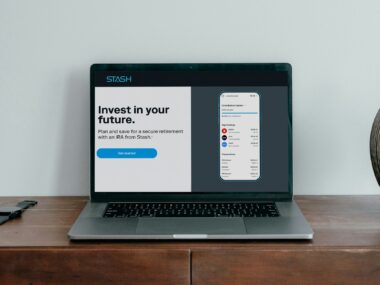Starting a blog can be a thrilling venture, filled with endless possibilities for creativity, engagement, and even monetization. However, in the vast online wilderness, how do you ensure that your voice gets heard amidst the cacophony of others? The key lies in not just crafting compelling content, but also in building an audience that eagerly anticipates your every word. In our detailed guide for beginners, we lay down the essential steps to help you not only find your readers but also to create a community around your blog.
Finding Your Niche and Voice
The internet is home to every subject under the sun, and every niche has an audience. To stand out, the first step is defining your niche. Consider what interests you and what you can write about passionately and consistently. Your niche should be a specific area where you can position yourself as an authority or an enthusiast. Once your niche is chosen, your voice becomes crucial it’s the unique flavor that differentiates your blog from the rest. Your voice should be authentic and reflective of your values, expertise, or personal experiences.
One essential aspect of building your audience as a beginner blogger is ensuring that you provide valuable and relevant content that resonates with your target readership. For instance, if you are writing about construction or home improvement, you might incorporate specific terms that your audience is searching for, such as “commercial concrete contractors near me.” By including anchor text like this in your blog, you not only enhance your SEO strategy but also guide your readers to related, helpful resources, thus establishing your blog as a trustworthy source of information in your niche.
Niche Research Demystified
Conduct thorough research to understand the competition within your desired niche. What is the level of saturation? Are there any gaps you can fill? Utilize tools like Google Trends, AdWords, or even social media polls to gauge interest in potential topics.
Crafting Your Voice in Writing
Experiment with various writing styles and find one that feels most natural to you. Your tone can be informative, conversational, humorous, or formal – it’s up to you. However, consistency is key; once you find your voice, ensure it remains consistent from post to post.
Creating High-Quality Content
Blogs thrive on content, and as a new blogger, this is where you’ll make your first impression. High-quality content is valuable, actionable, and engaging. Whether you’re aiming to entertain, inform, or persuade, every post should offer something to the reader – be it a new perspective, useful information, or a solution to a problem.
Content Pillars and Clusters
Organize your content strategy around pillars or primary topics that are broad and foundational to your niche. Then, develop clusters of related content that link back to the pillar content. This approach not only guides your writing but also aids SEO, helping search engines to understand the breadth of your expertise on a particular subject.
Consistency Is Key
Decide on a posting schedule that you can maintain consistently. Whether it’s once a week, twice a month, or daily, ensure that your audience can rely on when to expect new content. This consistency builds trust and keeps readers coming back for more.
Optimizing for Search Engines
Search Engine Optimization (SEO) is the practice of increasing the quantity and quality of traffic to your blog through organic search engine results. While it may sound complex, for beginners, it’s about understanding what your audience is searching for and making your content easy to find.
Keywords and On-Page SEO
Identify and use relevant keywords in your blog posts. These are the terms or phrases that your target audience is typing into search engines. Place these keywords strategically in your titles, headings, meta descriptions, and throughout the body of your content.
Internal and External Linking
Linking is a significant SEO factor. It shows search engines the structure and value of your content. Internally, link to other related posts on your blog to keep readers on your website longer, improving the user experience. Externally, when you reference other high-quality sites, it can also boost your credibility.
Engaging with Your Readers
Blogging isn’t a one-way communication channel. To build an audience, you need to engage with your readers. This means responding to comments, encouraging discussions, and even featuring reader input in future posts.
Creating Community
Beyond the comment section, consider creating a social media presence for your blog. Platforms like Twitter, Facebook, or Instagram can be excellent places to engage with readers on a more personal level. Social media also allows you to share snippets of your content, which can lead to more traffic.
Encouraging Interaction
Pose questions in your articles, create polls, or even host live Q&A sessions. The goal is to make your readers feel like they are part of a community and that their opinions are valued.
Monetization and Collaboration
Once you’ve built a solid readership, you might be thinking about how to make your blog profitable. There are various strategies for monetizing, from ads and sponsorships to creating and selling products or services.
Ads and Sponsorships
Many bloggers start with ad networks like Google AdSense. Once your traffic grows, you might attract sponsors interested in your specific niche. Be discerning when choosing sponsors to ensure they align with your niche and won’t compromise your brand.
Product and Services
Consider creating and selling digital products like ebooks, webinars, or courses. Alternatively, you might offer services related to your niche. For example, if your blog is about graphic design, you could offer design consultations.
Affiliate Marketing
Promote other people’s products and earn a commission for each sale. Again, choose products that are relevant to your niche and that you can genuinely recommend to your readers.
Analyzing and Adapting
To continue growing, it’s essential to analyze your blog’s performance. Tools like Google Analytics can provide insights into your traffic, audience behavior, and the performance of your content.
Stay on Top of Analytics
Regularly check which posts are performing well and which aren’t. If you notice patterns in your most successful content, consider producing more of that type. Likewise, take the time to understand why some posts underperform and use those lessons to improve.
Listen to Your Audience
Your readers can provide the most valuable feedback. Encourage them to share their thoughts and ideas for future content. Listen to what they say, and adapt your blog accordingly.
Conclusion
Building an audience for your blog is a rewarding yet ongoing process. It involves defining your niche, creating quality content, optimizing for search engines, engaging with readers, and monetizing strategically. Remember that success doesn’t happen overnight; patience, consistency, and a willingness to adapt are key. By following the steps outlined in this guide, you are well on your way to creating a blog that not only attracts an audience but keeps them coming back for more.






